
"There's no heat for blacksmiths, only different heat levels!"
Fire and steel. Water to cool the tools or even a burnt finger. In Aargau, old craftsmanship is alive and well - from pensioners to gynaecologists.
It's a bit chilly. The two fireplaces have not yet been lit. We won't start forging for at least half an hour. Enough time to have a look around. Two anvils immediately catch our eye. "One is from 1903 and the other is not much younger," says Hans Meyer, who shows me around the Schmitte (dialect for forge) in Oberentfelden. The founding member of the blacksmith's association makes it clear right from the start: "Nothing has been modernised in the smithy, we work entirely according to the old craftsmanship tradition."
Luck in misfortune
The large air hammer in the corner of the parlour is also a remnant from times gone by. "You can still buy these machines for free forging today, but they cost around 15,000 francs," says Hans. Too much for the association. That's why the old model from 1928 was quickly restored and is still running like clockwork today.
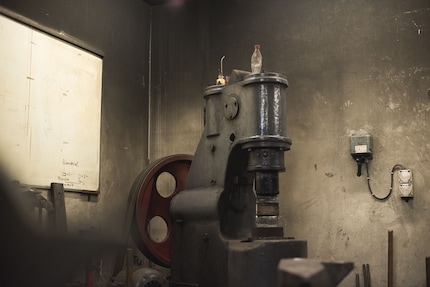
But that's not the only place where the blacksmiths' association has lent a hand. The entire building was restored. "The smithy was built in 1842/43 and has never been anything else since." That's nice from a historical perspective, but some of the rooms no longer looked really cosy. However, the decisive factor for the renovation was an accident. "A year after we rented a room here, someone crashed their car into the Schmitte and took one of the pillars in front of the entrance with them," says Hans. After that, the municipality actually wanted to have the building demolished, but the canton intervened, allowing the association to officially acquire the Schmitte. It was then restored, remodelled and a small museum was housed on the upper floors.
The museum contains all kinds of historical artefacts. Old artefacts found during the renovation, knives in various sizes and shapes that were forged in the Schmitte, and a so-called Feierabendziegel from 1787. Please what? "When the job was finished, the blacksmiths inscribed a roof tile in thanks. There's everything from innocent cat paws to sexist slogans on these tiles," says Hans. Even more impressive is a curved door fitting. "The blacksmith's work here is incredibly delicate. Each notch represents a single hammer blow." With all the holes, it must have taken a while.
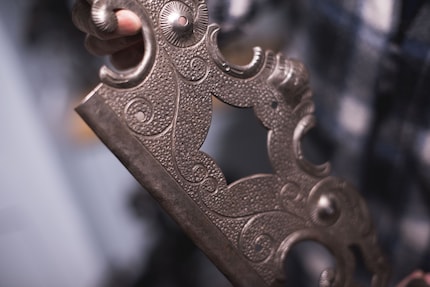
The forging aprons are fitted
Meanwhile, work is underway in the parlour. The fires are hot. They are fuelled with coke. Not the white powder, but the carbonised fuel. In the past, charcoal was used, but an acute shortage of wood forced the forging industry to rethink. So it switched to hard coal, or rather fat coal. "It would never burn in a normal fireplace, but it's perfect for us because it doesn't burn down so quickly," explains Hans.
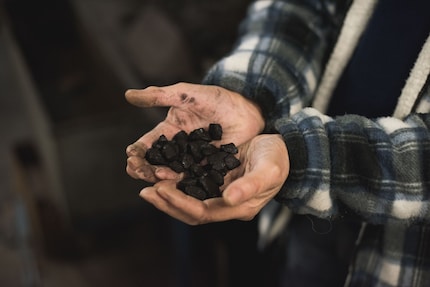
Three men are now working alternately at the two furnaces. One is making hinges for a treasure chest, another is making candlesticks for the living room and the third is making hearts for the Christmas market next weekend. These pieces are generally not sold. "It's rare that we make something on request, but otherwise it's all for practising our hobby."
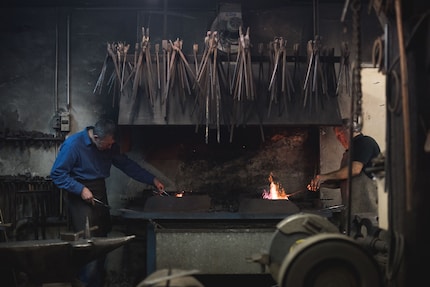
The steel, which mainly comes from scrap metal, is placed in the flames again and again. I want to know how hot the fire is. "We usually work with temperatures of around 800 degrees," says Hans. However, nothing is measured precisely here; the blacksmiths recognise the temperature based on the colour of the flames. "You need a bit of experience for that, you don't learn it in theory." The temperature is changed by the air supply from below, which fans the fire. Small accidents are part and parcel of playing with fire, but no one has ever suffered more than a few minor burns. "We are used to employees working in the heat. But for us blacksmiths, there is no such thing as heat, just different heat levels."
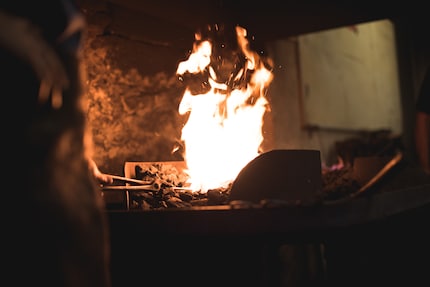
Pizza is more popular than forging
The more than 100 members can gain more experience every Friday evening or once on request. Between five and ten members usually turn up. "As we only have two fires, it wouldn't make sense to have too many blacksmiths anyway," says Hans. "More members usually join as soon as we go to the pizzeria next door." The heterogeneity of the club is somewhat surprising to me. From gynaecologists and pensioners to EMPA employees, everything is represented. "Anyone who enjoys the craft is welcome. It's as simple as that," says Hans. Age and place of residence are also very different. "To a certain extent, this is also due to the fact that there is no other blacksmith association like ours." The only thing that could be worked on is the proportion of women. So far, only two members are female.
While Hans explains, I keep looking over the shoulders of the amateur blacksmiths with fascination. Even after this short time, I can understand how this craft can cast a spell over you. For Hans, it is above all the constant malleability of such a hard material. "If the wood is sawn too short, you have to use a new piece. Iron, on the other hand, can be brought back into shape by heating it." Now I feel like swinging a hammer too.
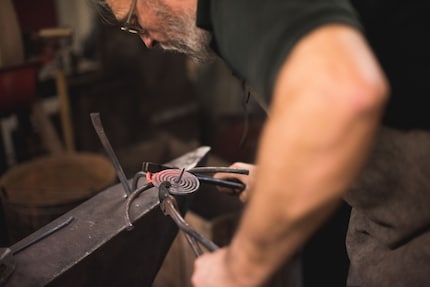
Even the layman can still have a go
And I'm promptly allowed to forge a small horseshoe. With a lot of help, of course, but still. A heated steel rod is placed over the cylindrical side of the anvil and I tap it into the typical horseshoe shape. In a second step, and after heating it again, I have to tap it flat. Nice and even, otherwise it won't look like anything in the end. Then I make the indentations at the top ends of the horseshoe and the thing is finished. But I don't want to be lumpy and want the thing in gold. So I go over it once with the brass brush. The pigments settle on the warm steel and stick there.
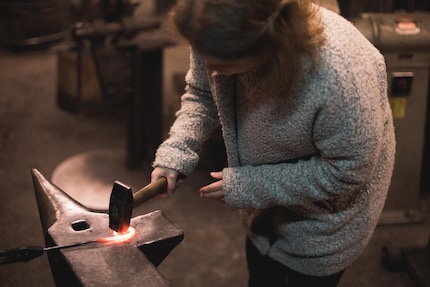
About the horseshoe. Do you know where the superstition that they bring good luck comes from? In times gone by, iron was an incredibly expensive material, which is why it was recycled back then. A new horseshoe was made from one and a half horseshoes. And since horses like to gallop around the pasture a bit, it could happen that a horseshoe came loose. Lucky for the person who found it and saved a lot of money.
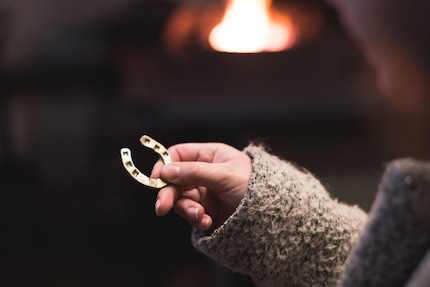
I'm not saving any money, but I'm still really happy about my own little horseshoe. It's a great feeling to hold something you've made yourself in your hands. That's why the members of the blacksmiths' association go to the gloomy smithy every Friday. And the blazing fire and glowing steel articles certainly play their part.
My life in a nutshell? On a quest to broaden my horizon. I love discovering and learning new skills and I see a chance to experience something new in everything – be it travelling, reading, cooking, movies or DIY.
Interesting facts about products, behind-the-scenes looks at manufacturers and deep-dives on interesting people.
Show all